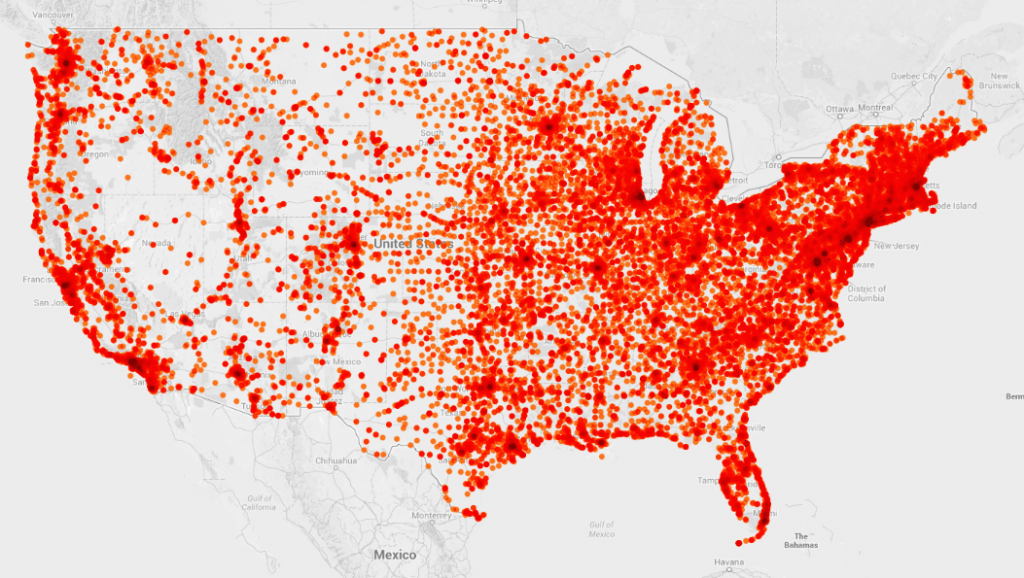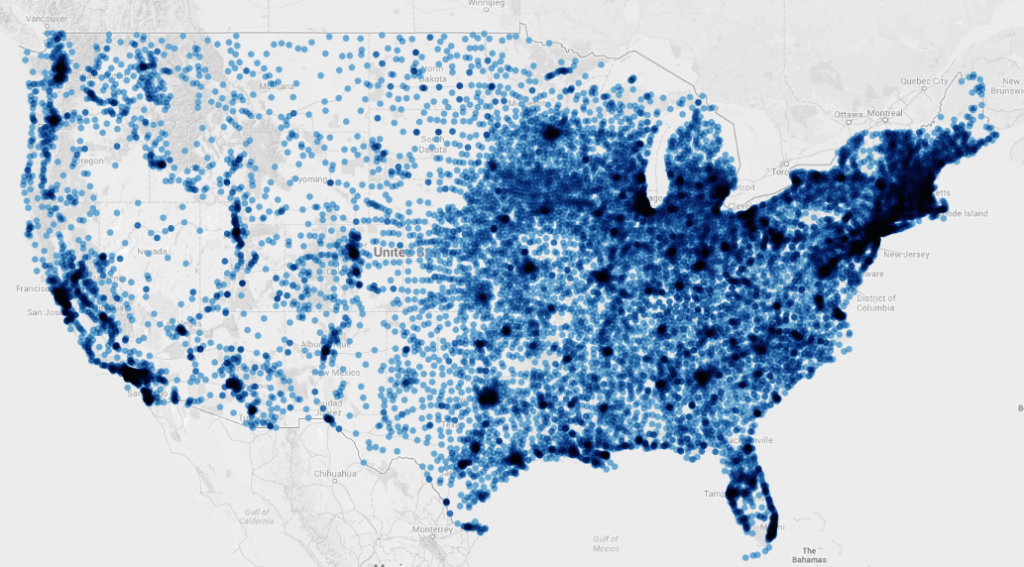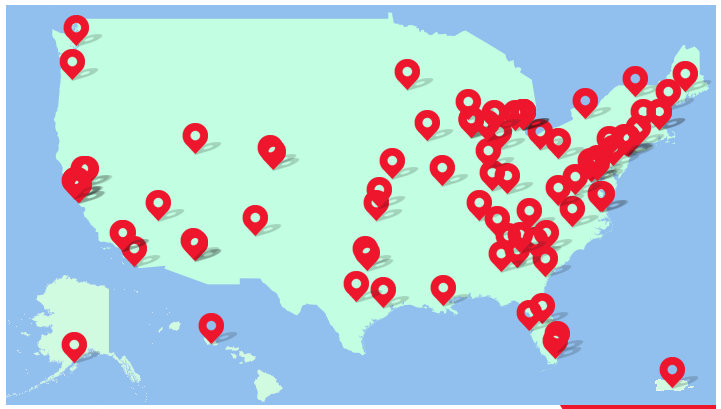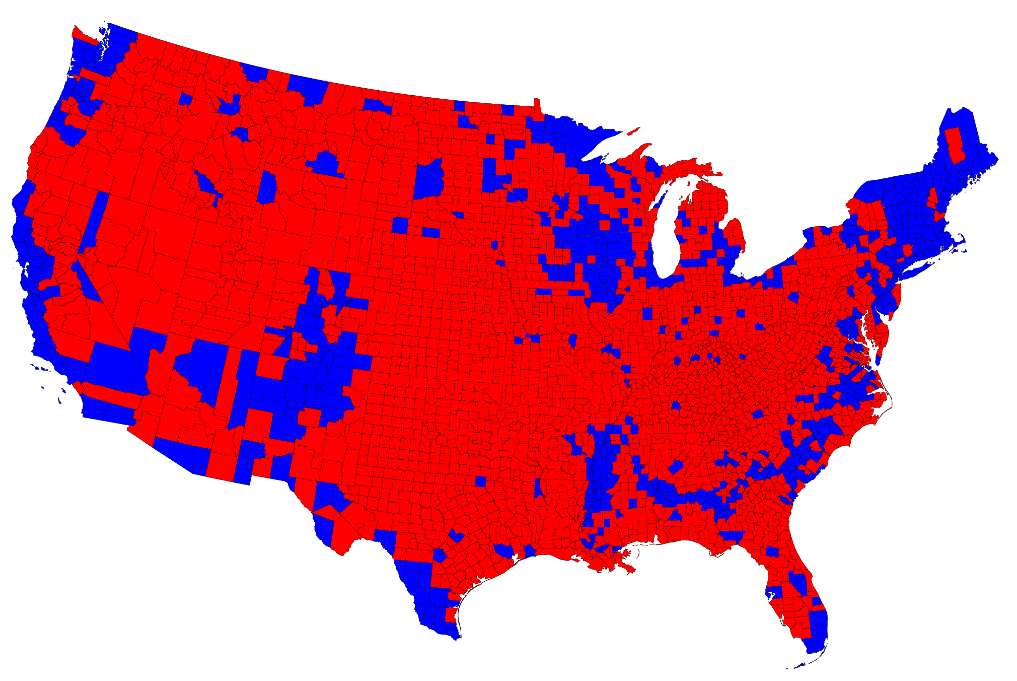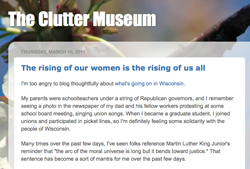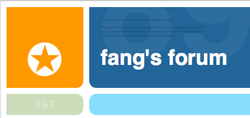Let’s begin with a few U.S. maps published recently.
Here’s one, built at the National Day of Civic Hacking, of every public library branch (and a few bookmobiles) in the contiguous U.S.:
And here’s a similar map of every museum in the lower 48:
Note the dearth of such cultural institutions in large swaths of the western U.S. Yes, some of that cultural hole can be attributed to less dense population patterns in the West, but it’s not as if there’s no one living in, working in, or visiting those areas. Perhaps it’s not surprising that less dense, conservative states might not allocate sufficient funding to sustain cultural institutions. Indeed, even where museums do exist in the relatively sparsely populated Intermountain West and Great Basin, they are, with a few notable exceptions, not exactly distinguished institutions.
Even more significant is the giant western hole in the map of cities participating in the National Day of Civic Hacking:
Now that I’ve spent three years in that region and have become familiar with its technological deficit—in terms of professional development but also of basic connectivity (in parts of Idaho, bears can take down the internet, and as recently as 2011, Idaho had the slowest internet speed in the nation)—I’m not surprised to see a complete lack of participation in the day of civic hacking. Rather than advocating for public investment in educational and technological infrastructure—which might both make Idaho’s workforce more attractive to high tech companies and inspire individual Idahoans to launch start-ups and tech businesses—political “leaders” in Idaho are focusing on abolishing minimum wage laws and other government regulations that allegedly inhibit the growth of low-paying industries.
Let’s look beyond my current region, however. Imagine overlaying that civic hacking participation onto a map of the results of the last presidential election returns, especially one that represents results by county:
It’s no wonder the Obama campaign was able to mobilize social media, big data, and related technologies so well in 2008 and 2012. Republicans have taken notice, and cultural observers like Markos Moulitsas are pointing out that the Republican failure to take advantage of technology and data is less about “a lack of organization” than it is about “a lack of talent.” Worse, as Moulitsas uses several examples to illustrate, when conservatives do engage with technology, they may be more likely to use it to close down access to information rather than open it up.
Big tent technology
As someone on the left side of the political spectrum, it would be easy for me to sit back, smirk, and enjoy watching conservatives’ lack of technological skill help to drive the Republican party into oblivion. Alas, this technological divide between red states and blue states has repercussions beyond who holds political office. Of particular concern to me as a professor and a parent are career opportunities, particularly since my current state of residence appears to be putting more stock in attracting arms manufacturers and call centers than in cultivating a generation of civic-minded, technologically savvy workers.
I’ve said it here before, and I’m sure I’ll say it again: being a progressive means “big tent” thinking. It means seeking justice and fairness and uplift for all people—even those who have political views I find repugnant. And so I’m saying those of us who have any tech savvy at all who live in red states need to help conservatives (and others) get their technological house in order.
Over the past 30 years, conservatives have ridden a wave of fundamentalist Christian indignation over demographic shifts and changing social mores. Accordingly, conservative political operatives have—at least in the public eye—invested more time and energy in developing rhetorical flourishes that manipulate feeling than they have in collecting, analyzing, and interpreting data. I’m not the first progressive to observe that conservatives are not interested in reliable evidence or carefully interpreting data. Both conservatives and liberals participate in social and mainstream media echo chambers that amplify and reinforce our beliefs, but in my experience, liberals are more likely to read widely, learning from a broad spectrum of voices in the humanities, social sciences, sciences, and arts. That learning, I’ve observed, often includes a depth and breadth of knowledge about technology.
People from all over the political spectrum ought to be interested in hearing all voices, in having more conversations, in increasing the quality and quantity of civic discourse. In the 21st century, that discourse involves a good deal of digital, networked technology. We connect and communicate with it, and we wade into its ever-flowing streams of data, news, and information. Again, in my experience (and as suggested by the maps above), those who identify with the political left are more likely to swim boldly into and try to make sense of—or even shape—these currents.
(It was at this point in my discussing this idea with her that a good friend pointed out I’m setting up a positivist narrative, one in which technological enlightenment leads to intellectual and political enlightenment of a group of people who can cling stubbornly to outdated ideals and dangerous cultural and economic practices. I don’t believe in technology as redemptive in and of itself, but I think in the case of Idaho and other conservative regions, a good dose of training in technological tools and languages–in the digital humanities–couldn’t hurt.)
In local practice
Let’s look at an example of this thinking in action. Already my minor infusion of digital humanities practice into my classroom has revolutionized many students’ relationships with technology. They write in their end-of-course reflections about how they had seen themselves as technophobic or technologically inept, and now they’re curious about digital tools and willing to experiment. Of course, learning to use most apps doesn’t involve manipulating and visualizing data or writing code that can change the functionality of an app or website. But my students’ growing confidence in their technical savvy has led them to imagine developing apps–and in one assignment I had them write grant proposals to do so. For some students, this app development plan took the form of investigating software development firms, but other students researched the ways they might build apps themselves.
And yes, at least half of my students from this past year consider themselves to be conservative, many of them profoundly.
How can we grow this kind of energy and curiosity, and teach these kind of tech skills more broadly? Digital storytelling is a natural fit. But I think we need to take the next step, too, and engage people who inhabit the vast unhacked spaces on the map in civic hacking, in the languages—rhetorical and computational—of the digital era.
If you have ideas on how to make this happen, especially face-to-face, and how to fund it, leave them in the comments.
(This post was inspired by a session I attended at AdaCamp San Francisco on resources for women new to coding.)
